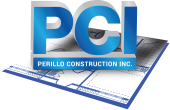Commercial renovations are exciting opportunities to modernize, rebrand, or optimize your space. Whether you’re aiming to increase tenant appeal, boost operational efficiency, or prepare for new business needs, a well-managed renovation can significantly increase the value of your property. However, transforming a commercial space is also a complex endeavor. Success depends on understanding each stage of the process—and making strategic decisions along the way.
Today’s guide breaks down what it takes to manage a commercial renovation from the first design ideas to the final finishes, helping you approach your project with clarity and confidence.
Planning and Pre-Design
Every successful renovation starts with a solid foundation. This initial phase involves assessing your property’s current condition, identifying your goals, and assembling a team. Whether you’re upgrading common areas, reconfiguring office layouts, or overhauling outdated systems, the planning stage is the time to define scope, budget, and timeline.
Start by hiring a qualified architect or designer who understands commercial requirements. Their insights are invaluable for translating your needs into functional, compliant layouts. Additionally, bring a contractor on board early—one with experience in commercial interiors. Their early involvement helps keep the design practical and cost-efficient, reducing the risk of major changes during construction.
Design Development
Once you’ve clarified your vision, the design development phase begins. This is where architectural drawings and renderings come to life. Your architect will produce schematic designs that detail spatial flow, structural changes, mechanical needs, and finish selections. If your project includes tenant areas or office space, collaboration between the owner, designer, and future occupants is key to ensuring the layout supports both aesthetics and productivity.
During this phase, you’ll also begin working on material selection—flooring, lighting, cabinetry, color palettes, and branding elements. Budget alignment is essential here; keeping lines of communication open between the design and construction teams helps prevent scope creep and costly redesigns.
Permitting and Procurement
After finalizing your plans, it’s time to submit drawings for permitting. Commercial renovations often require approval from local building departments, especially if the work involves structural, mechanical, or electrical changes. Having a contractor familiar with local codes and permitting processes will save time and help you avoid red tape.
In parallel, your contractor will begin procurement—ordering the materials and systems needed for your build. Lead times can be unpredictable, so ordering early (especially for custom finishes or specialized equipment) is critical to staying on schedule. Many delays in renovation projects stem from backordered materials, so be proactive in locking in product availability.
Construction and Project Management
With permits approved and materials arriving, the physical transformation begins. Construction is typically broken down into phases to maintain workflow and minimize disruptions—especially in occupied buildings. Demolition, framing, rough-ins (electrical, HVAC, plumbing), drywall, and finishing all require careful sequencing to ensure quality and efficiency.
Effective project management is essential throughout this stage. Weekly check-ins with your contractor and/or project manager help track milestones, address any issues, and confirm that inspections are being passed at each step. If problems arise—such as hidden damage or structural surprises—having a flexible but decisive management approach ensures you can pivot without blowing the budget.
Interior Finishes and Final Touches
As construction nears completion, attention turns to the details that define the space. Installing flooring, millwork, lighting fixtures, signage, and custom finishes gives the renovated area its identity and functionality. This is also when inspections are finalized, punch lists are created, and minor adjustments are made before turnover.
Careful attention during this phase makes all the difference in the final impression. Clean transitions between materials, coordinated finishes, and attention to detail in layout execution will distinguish your project and elevate its value. Don’t rush through final walk-throughs—this is your chance to ensure the build matches your expectations.
Handover and Occupancy
Once the renovation is complete, your contractor will provide documentation, close-out reports, warranties, and manuals for all new systems. If the space is leased or occupied, prepare for a smooth transition by communicating with tenants or end users. Ensure that any changes to emergency egress, ADA access, or equipment use are clearly explained.
From this point forward, your updated space is ready to support your goals—whether that means welcoming new tenants, increasing workplace satisfaction, or attracting more customers.
Building It Right
Managing a commercial renovation from start to finish requires more than just design expertise—it demands organization, foresight, and a trusted construction partner. A contractor with experience in commercial interiors, code compliance, and client collaboration can make all the difference between a stressful build and a seamless transformation.
If you’re planning a commercial renovation and need expert guidance from floorplans to finishes, Perillo Construction is ready to help bring your vision to life.

